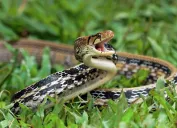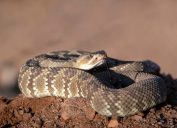The 6 Creepiest-Looking Snakes, According to Experts
These exotic species stand out for their especially scary appearances.

As far as members of the animal kingdom go, snakes are arguably one of the most recognizable for their uniform appearance. But even though the slithery creatures may be a go-to for schoolchildren looking for an easy subject to draw, there are thousands of different snake species that can each be defined by their physical traits. Some are larger and built for catching and constricting prey, while others have distinct markings that can help them hide in their natural habitat. And in special cases, their unique features can make them look downright scary. Read on to see which types of snakes are the creepiest-looking, according to experts.
READ THIS NEXT: Watch Out for These Venomous Snakes "Suddenly Invading," Experts Caution.
1
Spider-Tailed Horned Viper

Just as it's not uncommon for someone to have a deeply rooted fear of snakes, some people carry a deep fear of spiders. Coincidentally, one type of exotic reptile happens to combine a little bit of both into the same animal.
"The spider-tailed horned viper is a snake with a tail that looks like a spider," says Pierre Cab, founder and owner of Reptile Craze. "As a snake that resides in the desert, its body even looks like sand particles!"
Cab adds these features make the species incredibly good at catching its own meals. "When it is hunting for prey, all you can see is its spider tail acting as a lure. Those that are drawn in by its decoy do not even have time to react as all they see is a large viper lunging forward for the kill," he says.
2
Horned Desert Viper
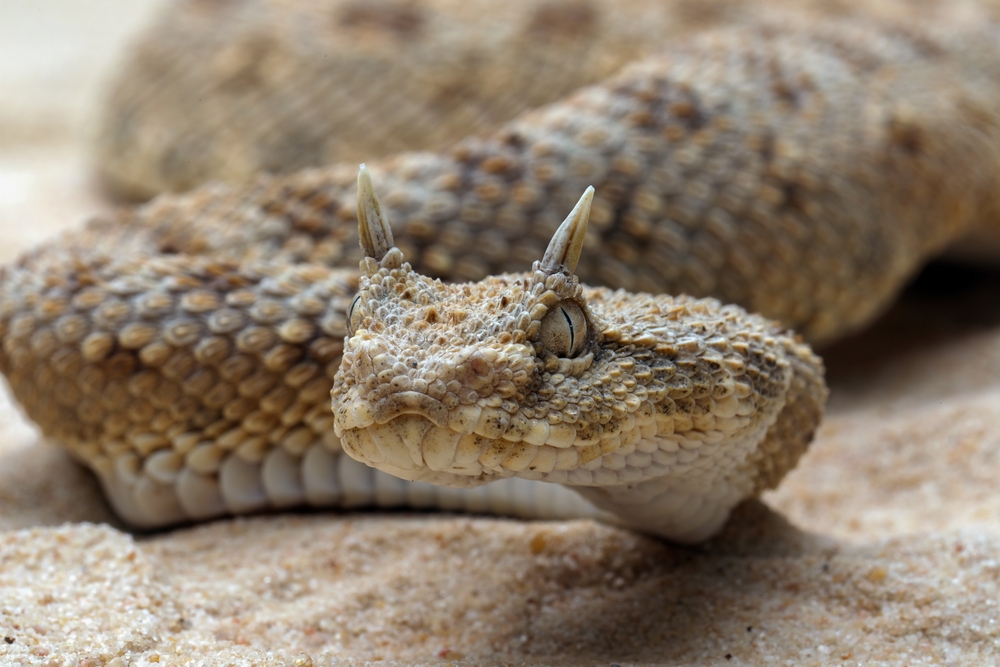
Horns aren't too shocking of a sight when they appear on the head of a buck, ram, or moose. But experts point out that they can appear particularly menacing when they're on a snake.
"There are a surprising number of snakes with horns, but one of the creepier ones is the horned desert viper," Georgina Ushi Phillips, DVM, advising veterinarian and writer for The Reptile Room, tells Best Life. "These snakes are primarily found in the Arabian Peninsula where they prefer dry sandy areas."
But their defining physical feature isn't just for show. "Besides looking intimidating, their horns—which are located right above either eye—help protect their eyes from blowing sand that's common in their habitat."
READ THIS NEXT: The No. 1 Place Snakes Love to Hide Before They Strike.
3
Dragon Snake
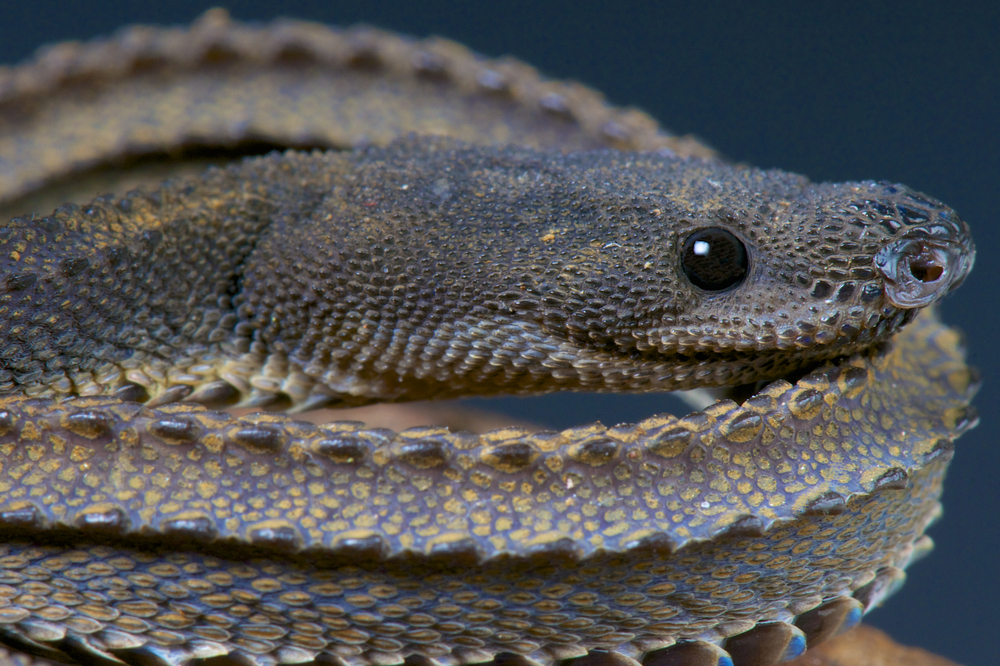
The world of fire-breathing dragons is thankfully relegated to fantasy novels and shows like Game of Thrones. However, there's one species of snake that might have you convinced for a minute that they might have crossed over into reality.
"The dragon snake looks exactly like its name," says Cab. "It has raised scales running all over its back, its nostrils are flared out—and even its signature black color looks intimidating."
But don't expect this reptile to take part in any Khaleesi-style attacks any time soon. "The first thought that comes to mind when first looking at this snake is: 'It's going to breathe out fire!'" Cab tells Best Life. "No matter how menacing this snake looks, it can actually be a pet snake. Thankfully, its hobby is staying inside its hide and eating small fish instead of wreaking havoc on a village."
4
Brahminy Blind Snake
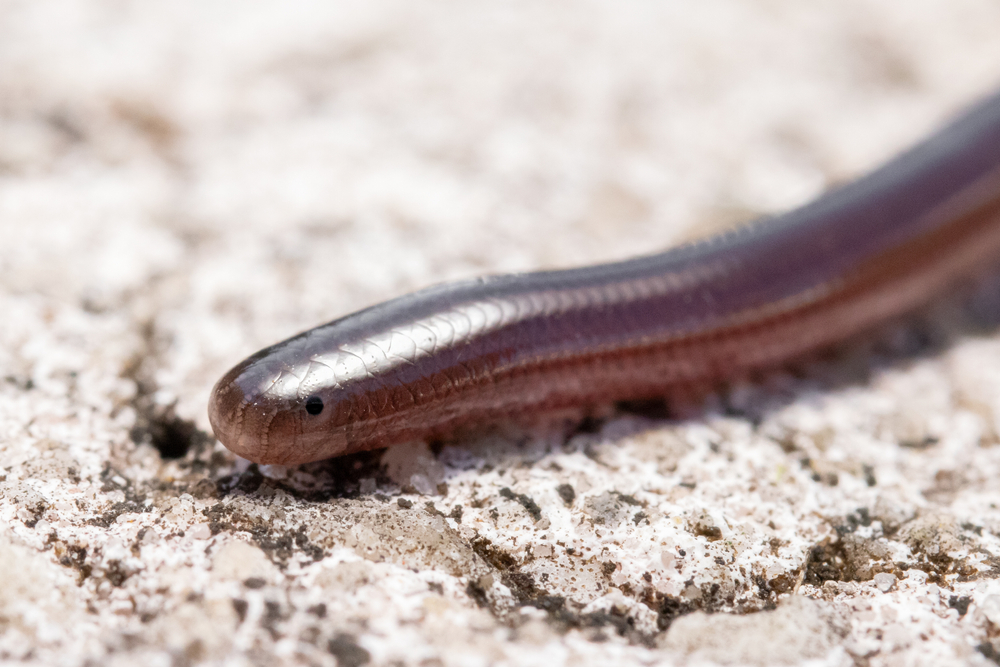
Some reptiles inspire fear with their large size or sharp fangs. But when it comes to being creepy, the Brahminy blind snake stands out for a very different reason.
"Even though these snakes originate in southern Asia, they're now found all over southern Florida," explains Phillips. "They aren't venomous and haven't made any significant impact on the local ecosystems, but they are still a bit creepy."
"They're small—usually around five inches—and as you'd expect from their name, they're almost completely blind," she says. "They look more like big worms than snakes thanks to their dark color and minimal features, and there's something about a 5-inch worm that's a little creepy!"
For more animal info delivered straight to your inbox, sign up for our daily newsletter.
5
Tentacled Snake
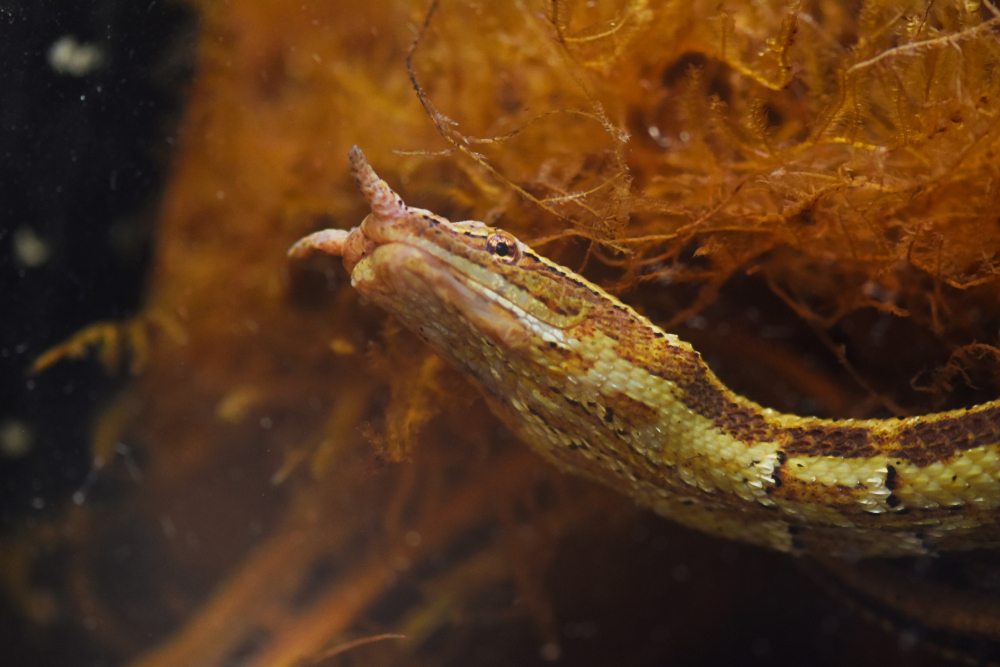
Snakes' defining characteristic is that their body is free of appendages. Perhaps that's why the tentacled snake stands out as a particularly eerie species in the world of reptiles.
"This appropriately named aquatic snake has two short tentacles extending from the tip of its face that almost look like a snail's antennas," says Phillips. "The exact reason for these tentacles is still a little unclear, but it certainly makes this snake look creepier than your average serpent."
6
Spiny Bush Viper
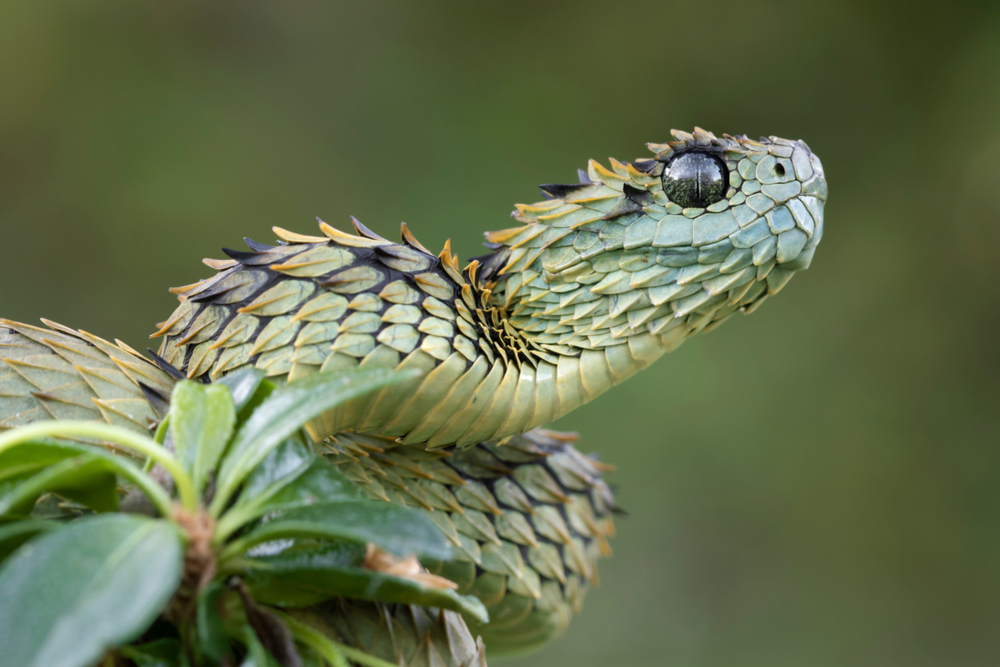
Snakes are notoriously scaly animals, with many that feature intricate patterns and colors that help them blend in. On the other hand, other species take a more textured approach when it comes to their look.
"The Atheris hispida is a viper covered with thorny scales, which is why it is also called the African spiny bush viper," says Cab. "Even its large eyes are encased with scales!"
Unfortunately, encounters with these animals may be as scary as their appearance. "One may claim that they are the porcupines of the snake world. Its terrifying look also matches its personality as this snake is feisty and can deliver a deadly venomous bite," Cab notes.
